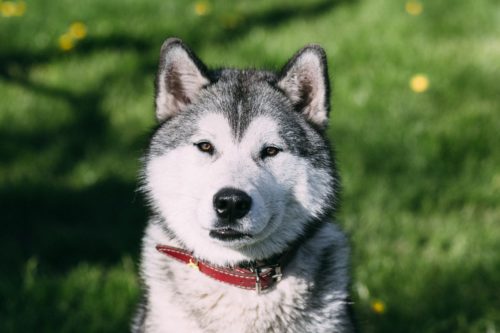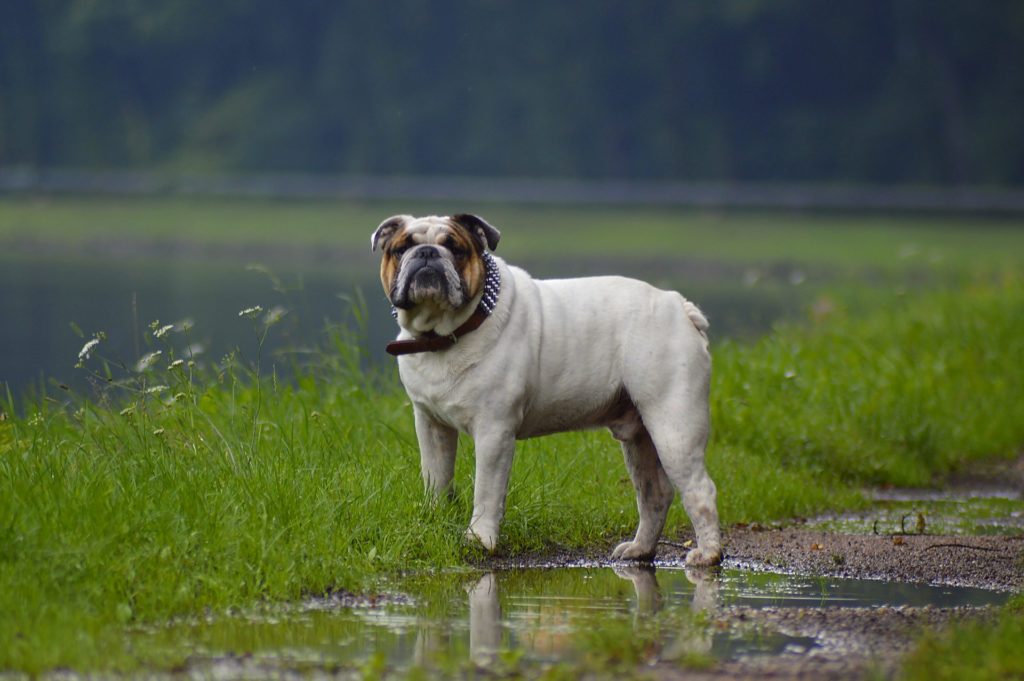If you notice your dog is experiencing difficulty when breathing, it is important to research possible causes and symptoms of various respiratory disorders so that when you meet with your veterinarian, you are armed with a baseline knowledge of possible causes.
Watching your dog struggle to breathe can create a feeling of helplessness as an owner since your dog cannot communicate to you what he is feeling or how you can help him. The best thing you can do as a responsible pet owner is establish a foundational knowledge of canine respiratory processes, analyze the symptoms your dog is exhibiting, and research the possible cause of your dog having trouble breathing.
Once you have followed these steps, it is vital that you visit a licensed veterinarian in order to get an official diagnosis and assess treatment options.
The Canine Respiratory System
The canine respiratory system is complex and contains many components. The main elements of the canine respiratory system that are important to understand are the lungs, throat (pharynx and larynx), nose, mouth, and windpipe (trachea). As your dog inhales a breath, the air travels into his body through the nose or mouth and is flowed down into the lungs. This process is known as inspiration.

Once the oxygen has filled the lungs, it is transferred into the red blood cells where it is then transported to various organs throughout the body. As the oxygen in the lungs is transferred to the red blood cells, the red blood cells release carbon dioxide to the air within the lungs. The carbon dioxide is then expelled through the nose or mouth. This process is known as expiration.
Many different types of diseases are capable of affecting the canine respiratory system and pose a serious danger to dogs. If your dog develops difficulty breathing, it is vital that you seek veterinary care immediately as this can be life threatening in some cases.
Symptoms of Breathing Difficulties in Dogs
Though it may seem a simple task to recognize when your dog is having difficulty breathing, there are many different types of breathing difficulties that can affect dogs and distinguishing the subtle differences is important in order to ascertain the underlying cause.
There are three main types of breathing abnormalities that affect dogs, they are abnormal panting, rapid breathing (tachypnea), and labored breathing (dyspnea). Below is an overview of each type of breathing abnormality and potential symptoms.
Abnormal Panting
While all dogs pant as a way to release heat and lower their body temperature, abnormal panting is a type of breathing difficulty that some dogs may exhibit when suffering from a respiratory issue. Abnormal panting is characterized by:
- Wide, open mouth
- Unusually shallow breaths
- Quickened breathing
- Extension of the tongue outside of the mouth
Rapid Breathing (Tachypnea)
Tachypnea refers to when a dog is breathing much faster than the current circumstances warrant. If this is the case, they will be described as tachypneic. The symptoms of tachypnea include:
- Closed or partially open mouth (generally not open as wide as when panting)
- Faster rate of breathing
- Much more shallow breaths than normal
Labored Breathing (Dyspnea)

Labored breathing is differentiated from rapid breathing as in this state a dog will be struggling to breathe and will be working much harder to breathe than circumstances warrant. While rapid breathing will exhibit a dog breathing only faster, labored breathing is marked by a dog trying and struggling to inhale the air he needs. Dogs in this state are described as dyspneic. A dyspneic dog may exhibit:
- Loud, noisy breathing
- Flared nostrils
- Breathing with an open mouth without panting
- Difficulty when inhaling, exhaling, or both
- Increased movement in the chest wall and belly when attempting to breathe
- Neck and head positioned low and in front of the body (extended) in order to facilitate the intake of air
Potential Causes of Breathing Difficulties in Dogs
The root cause of a dog’s difficulty breathing must be diagnosed and confirmed by a licensed veterinarian before a treatment option can be chosen. In order to determine the cause for your dog, visit a veterinarian as soon as you identify symptoms of difficulty breathing. Below are a handful of the potential causes of breathing difficulties.
- Tumor
- Infection
- Presence of a foreign object
- Elongated soft palate
- Tracheal collapse
- Pulmonary edema
- Pneumonia
- Heart enlargement
- Heartworm disease
- Bruised or bleeding lungs
- Allergies
- Inflammatory disorder
- Pulmonary effusion
- Accumulation of blood or other fluids
- Accumulation of air
- Traumatic injury to the chest wall
- Partial paralysis of the chest wall
- Ascites
- Enlarged Liver
- Hypoxemia
- Anemia
- Blood clots in the blood vessels within the lungs
- Traumatic rupture of the diaphragm
- Congenital hernias




